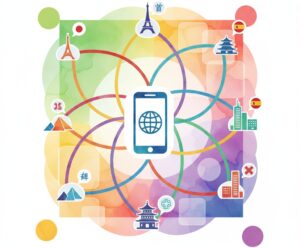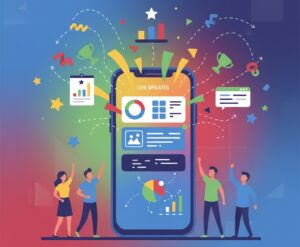When every department picks its own tools—Slack here, Teams there, and email everywhere—workplace conversations get messy fast. Files disappear, updates slip through the cracks, and employees feel disconnected. Research shows companies juggling more than 10 tools see communication issues for over half their workforce. That kind of fragmentation hurts collaboration, culture, and results.
I’ve watched teams turn this around by centralizing everything in one place. With a custom app built on Yapp, organizations create a single hub where schedules, files, and updates live together. Suddenly, information flows freely and silos crumble. But here’s the key: one-size-fits-all software rarely works. Every team has unique workflows. That’s why a flexible builder matters—you design an app around your people, not the other way around.
Why Do Traditional Tools Fail to Connect Teams?
It’s tempting to believe that adding more tools makes communication easier. The opposite is true. Teams get stuck context-switching, managers struggle to keep track of conversations, and employees miss critical updates hidden in cluttered inboxes. Even when companies roll out enterprise platforms, they often feel too rigid for real day-to-day needs.
I’ve been in meetings where updates were buried in long email chains, and I’ve seen project deadlines slip because teams used five different channels for one initiative. That confusion erodes trust. In fact, 86% of workplace failures are blamed on poor collaboration.
A better approach is building a single space where chat, announcements, and resources live together. When employees don’t have to wonder where to look, they spend more time working and less time chasing information. That’s what makes internal comms effective.
What Makes a Custom App Transform Internal Comms?
Instead of adapting your processes to someone else’s software, a custom app adapts to you. That flexibility breaks down silos by keeping everyone aligned, whether they’re remote, hybrid, or in the office. Here’s how it works:
- Consolidation in one hub: From schedules and directories to documents and feedback forms, everything lives in a single app, not scattered across platforms.
- Engagement built in: Interactive polls, social feeds, and photo galleries make communication two-way, ensuring every voice is heard.
- Push notifications that cut through noise: Urgent updates reach employees instantly, no matter where they are.
- Tailored branding: Apps look and feel like your company, reinforcing culture and unity across teams.
- Real-time updates without IT delays: Need to change a schedule or upload a file? Update once, and it’s live for everyone.
Low-code and no-code platforms like Yapp put this power in the hands of comms teams. You don’t need developers or months of lead time. With drag-and-drop tools, anyone can launch, edit, and evolve a fully branded app in minutes.
I’ve built apps myself using Yapp’s platform, and what impressed me most was how quickly we could move. From creating onboarding workflows to rolling out wellness feeds, updates went live instantly—no IT tickets, no waiting.
How Do Custom Apps Drive Real Engagement?
It’s not enough to push messages out. Real engagement comes from creating conversation. Modern internal comms platforms transform employees from passive readers into active participants.
That’s something I’ve seen firsthand with organizations like Cole Haan. They used Yapp to create employee communication apps where store managers shared styling ideas, recognized peers, and celebrated wins. With over 2,400 in-app interactions, the tool became more than a notice board—it became a living community that connected employees nationwide.
Custom apps support this kind of engagement with features like:
- Surveys and polls: Gather fast, honest feedback from employees.
- Social walls: Celebrate wins and share stories beyond formal updates.
- Recognition feeds: Highlight accomplishments and build a culture of appreciation.
- Analytics dashboards: Track what content resonates, spot quiet departments, and improve messaging in real time.
When you centralize communication in one branded app, employees feel more connected to each other and the company’s mission. I’ve seen how analytics reveal hidden gaps—and how leaders can act before small issues become big problems.
By replacing fragmented tools with a single, flexible hub, organizations not only save time but also build stronger cultures. Engagement rises, silos fall, and communication becomes the backbone of company success.









